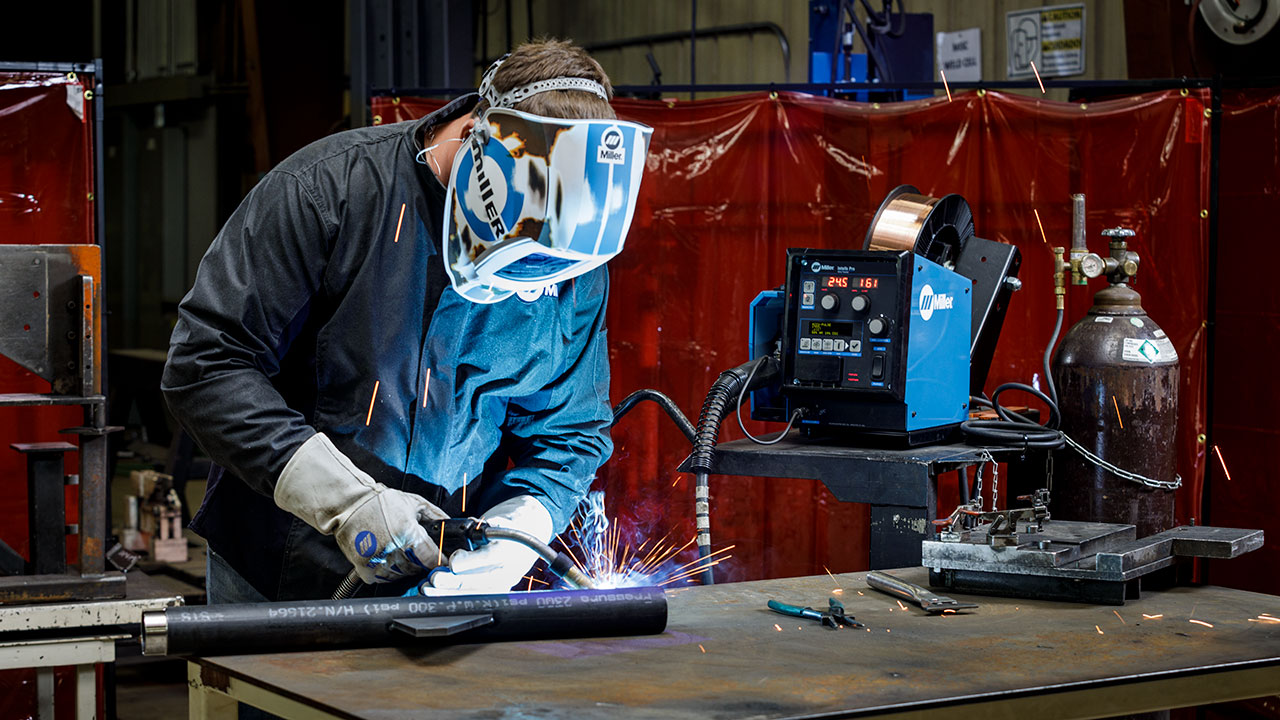The Relevance of Welding WPS: Ensuring High Quality and Security in Your Jobs
The Relevance of Welding WPS: Ensuring High Quality and Security in Your Jobs
Blog Article
Unlocking the Power of Welding WPS: Techniques for Effectiveness and Security in Construction
In the world of manufacture, Welding Treatment Specifications (WPS) stand as the foundation of welding procedures, dictating the essential steps for achieving both performance and safety in the fabrication process. Recognizing the details of WPS is extremely important to using its complete capacity, yet many companies struggle to open the true power that exists within these documents (welding WPS). By diving right into the strategies that enhance welding WPS, a globe of improved productivity and heightened safety and security waits for those ready to explore the subtleties of this vital element of fabrication

Significance of Welding WPS
The importance of Welding Treatment Specs (WPS) in the fabrication sector can not be overstated. WPS function as an essential roadmap that details the required actions to guarantee welds are performed continually and correctly. By defining important criteria such as welding procedures, materials, joint styles, preheat temperatures, interpass temperature levels, filler metals, and post-weld warmth treatment needs, WPS offer a standard method to welding that boosts performance, top quality, and security in manufacture processes.
Adherence to WPS aids in accomplishing harmony in weld quality, lowering the possibility of issues or structural failings. This standardization additionally helps with conformity with industry guidelines and codes, ensuring that produced frameworks meet the needed safety and security requirements. Moreover, WPS documents enables welders to reproduce effective welding treatments, causing constant results across different tasks.
Essentially, the precise advancement and rigorous adherence to Welding Procedure Specifications are paramount for upholding the integrity of welded structures, securing versus potential risks, and maintaining the online reputation of construction firms for providing premium services and products.
Trick Elements of Welding WPS

Enhancing Performance With WPS
When enhancing welding procedures, leveraging the vital elements detailed in Welding Procedure Specifications (WPS) comes to be crucial for streamlining processes Visit Website and optimizing productivity. One way to enhance efficiency with WPS is by thoroughly selecting the suitable welding parameters. By adhering to the specific guidelines provided in the WPS, welders can make certain that the welding tools is established properly, bring about consistent and premium welds. Additionally, following the pre-approved welding series described in the WPS can substantially reduce the moment spent on each weld, eventually enhancing overall performance.
Furthermore, appropriate training and accreditation of welders in understanding and executing WPS can even more improve efficiency. Guaranteeing that all team members are well-versed in interpreting straight from the source and executing the WPS properly can remodel and reduce errors, saving both time and sources. Regularly assessing and upgrading the WPS to integrate any type of lessons learned or technological innovations can additionally add to effectiveness improvements in welding procedures. By embracing the standards stated in the WPS and continually seeking methods to maximize processes, producers can attain higher effectiveness degrees and exceptional end outcomes.
Ensuring Safety And Security in Fabrication

Guaranteeing safety and security in fabrication entails a multifaceted technique that encompasses numerous aspects of the welding procedure. Welders should be outfitted with suitable equipment such as safety helmets, handwear covers, and protective apparel to reduce threats associated with welding tasks.
Moreover, adherence to appropriate ventilation and fume extraction systems is critical in preserving a healthy and balanced workplace. Welding fumes include harmful materials that, if inhaled, can posture severe health dangers. Applying effective air flow actions helps to lessen direct exposure to these dangerous fumes, advertising respiratory system health among employees.
Normal equipment maintenance and assessments are also necessary for ensuring security in manufacture. Malfunctioning equipment can lead to mishaps and injuries, emphasizing the importance of routine checks and timely repair work. Source By prioritizing precaution and cultivating a society of understanding, manufacture facilities can create a efficient and safe job setting for their employees.
Implementing WPS Best Practices
To boost functional effectiveness and guarantee high quality end results in fabrication procedures, including Welding Treatment Specification (WPS) best methods is extremely important. Choosing the suitable welding procedure, filler product, and preheat temperature defined in the WPS is important for attaining the desired weld top quality. Guaranteeing that certified welders with the essential accreditations carry out the welding procedures according to the WPS standards is important for uniformity and integrity.
Conclusion
In final thought, welding WPS plays a critical duty in ensuring efficiency and safety in fabrication processes. By following these strategies, businesses can open the complete potential of welding WPS in their fabrication operations.
In the realm of construction, Welding Procedure Specifications (WPS) stand as the backbone of welding operations, determining the essential actions for accomplishing both effectiveness and security in the construction process. By defining important parameters such as welding processes, products, joint layouts, preheat temperature levels, interpass temperatures, filler metals, and post-weld heat therapy demands, WPS supply a standardized approach to welding that boosts performance, top quality, and security in construction processes.

When maximizing welding operations, leveraging the essential components outlined in Welding Procedure Requirements (WPS) comes to be important for enhancing procedures and maximizing productivity. (welding WPS)
Report this page